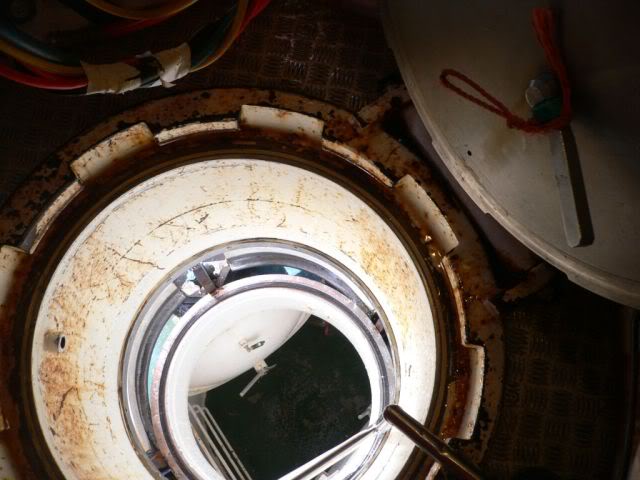I was asked in a thread about the HRV to show some pics, so i decided to do it this way, and start another thread, on Bell Diving.
For those who know all about it, then i am sorry if i go on a bit, and keep the language simple.
There is a few forms of bell Diving, and for air diving there is the wet bell. Basically its like a glass turned upside down, and on decent, you just pressurze it, to keep the water out of the dry space.
I have used a few, and most have around a quarter or a third as dry space, i have been in one, that really had 98% , as it was a like a glass upside down.
For those who dont know, a Dive Bell, regards of what type, has an umbilical from the ship to the bell. Then the divers have umbilical s from the bell to the diver.
I have spent most of my offshore mixed gas diving career doing something called bell bounce.
It all gets a bit confusing sometimes, as there is roll over bells, mini bells, etc , etc.
Bell bounce was something done in the 80's that for some reason was stopped, and back in 2004, the company i was working for started it back up.
Experimental tables too!
So i will post some pics here about bell bounce, and some Sat.
Saturation Diving, the short explanation is, you blow down in the system to storage depth. This depth is worked out by the Life support tech, and the gas is mixed for this depth. The bell is put to diving depth, and sometimes this gas mix can be different.
The divers do the job, spend say, 6 hours out, return to the system, lock on, transfer through, next divers go, carry on like this until the job is done, or 28 days are up. If the job is longer, the diver rotate out, decompressing in another chamber, after there replacements blew in.
Bell Bounce is more simple, but more pressure on the diver to preform.
The set up is basically the same, except the gas mix is different, as bell bounce is cost effective in more shallow water. The Divers get in the bell, while the bell is a surface pressure. They close the door, the bell is launched, and put to the depth. At this point, the bell pressure is still on the surface, so the dive has not begun. The door cant be forced inward by the water pressure due to the way it locks.
The Divers dress in, then we blow down. The point here is speed! When the door is opened, the diver is gone, and must be on the job in the fastest possible time. He is left to the last minute, and recovered to the bell, and once again, the strip down, is about speed, as the bell must leave bottom, like any diver. With the door shut, we head up, all the while, venting the bell, in accordance with the deco tables.
Like a Sat system, we lock on the bell, transfer through, and start deco, using pure O2 when we reach 15M, and deco out in about 3 hours.
The bell is vented to the surface, not the system, and then separated, so the next divers get in, and we go again.
The things a bell bounce systems does not have compared to a Sat system, is basically a shower, toilet, Hyperbaric life raft, Co2 scrubbers, and thats about it.
The beauty of this system, is your back on the surface each day. The cons, well none in my opinion, but some believe it is the cause of many problems later in life, and thats why it was stopped. I dont know.
But here are some pics. I hope, i am a bit unsure of this photobucket thing.

This one above is the bell bounce bell.

A view climbing up to the bell.

Main panel, Diver 1 and 2

O2 injection system, and Diver 1, and 2 helmets.

Bell door, solid titanium!

Diver 3 ( Bellmans Panel) and yeah, had to get in a watch shot. Its mine, been used hard, and that croc strap, has seen over 100 bell runs. Who needs a bracelet



Diver 1 and 2 out, and Diver 3 umbilical ( Which is stored on the outside, passed in )

Me started to get bored, waiting for the Divers to finish up!
Hope you guys like the pics, i do have plenty more, but i think the post is large enough.
